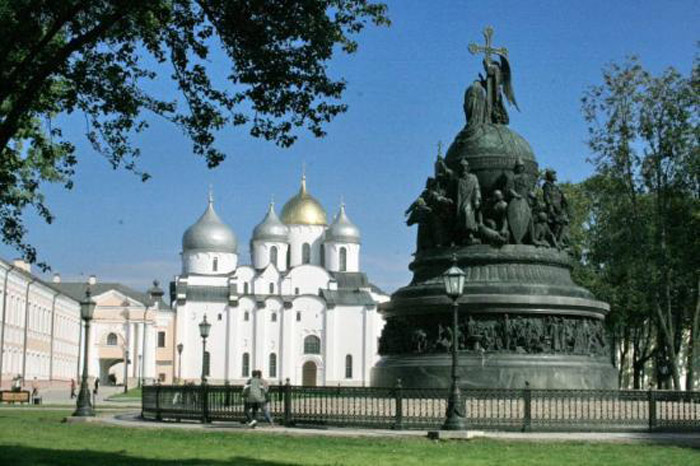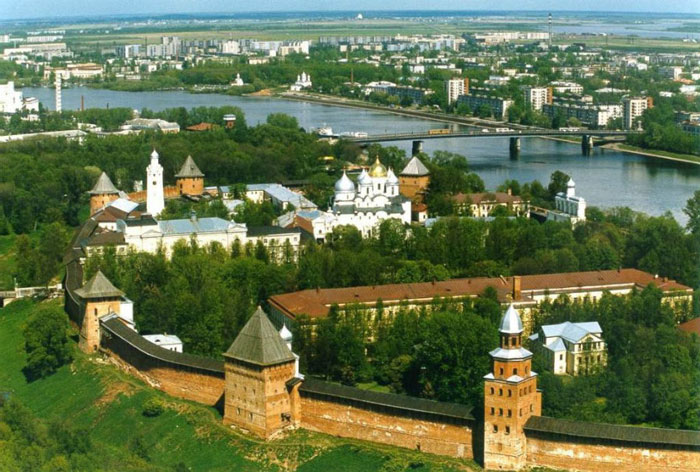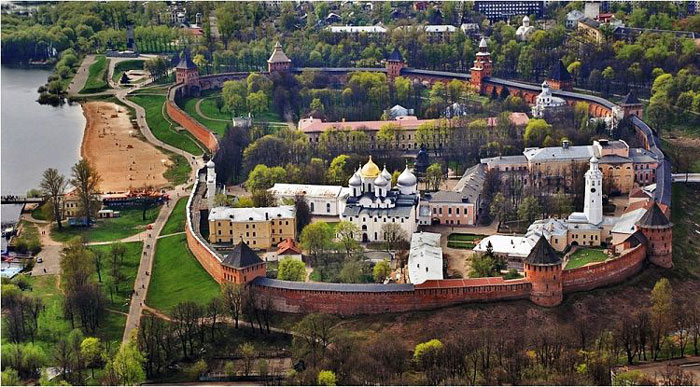Architectural works in Novgorod
Unesco Scientific, Educational and Cultural Organization has recognized the architecture in Russia's Novgorod as a World Cultural Heritage in 1992.
Novgorod is the first-class historic city in northwestern Russia. The city is located on a highway connecting Moscow with Saint Perteetersburg. Although there are many historic cities in Russia, there are no cities with many buildings and especially monuments with diversity as well as dates as in Novgorod.

During the Middle Ages, this city was culturally prosperous. Most of the residents have learned and use the writing on the bark of the tree to contact. Archaeologists also excavated the oldest Novice Slavic book . Several ancient chronological chronologies are also found in this city. Because of the cultural development along with a deep understanding of the cultural value of the majority of the city's residents, Novgorod owns numerous beautiful architectural works, especially the monument system .

Leading the list of beautiful buildings in Novgorod must include the Cathedral of Sophia . Holy was built in about 1040 under the direction of Yaroslav Mudryi. So far, Sophia Cathedral is one of the best preserved 11th century churches. This work is also the first church to show the original feature of Russian architecture with rustic stone walls, 5 dome sections simulated with a helmet shape. Not only was it impressive architecture, at Sophia Cathedral, there are also valuable frescoes painted in the 12th century. These frescoes were restored in 1860. Sophia Cathedral is decorated with many words. copper material, mostly brass, was produced in Magdeburg in 1156. Magdeburg was later acquired by the Novgorods from the Swedes in 1187.

The next work to mention after Sophia Cathedral is Detinets . This work is considered Novgorod Kremlin. Detinets was built around 1400-1433, in the population of the palace Detinets with the oldest Russian bell tower so far. The bell tower was built in the mid-15th century, and there was a large clock tower on it, the oldest clock in Russia completed in 1673.

Besides this architectural complex, there is a royal palace area built in 1771 and the Millennium Monument of Russia inaugurated in 1862. The monument was built entirely of bell-shaped brass. , symbolizing the formation stages of Russia. On the monument there are embossed reliefs of 129 famous figures including Piort Dai De and Ivan De III.
Outside of the Detinets, there were walls and three large cathedrals built during the reign of King Mstislav the Great - the last king of the unified Rus state. St. Nicholas Church was built in 1113 and completed in 1123. There are frescoes in the cathedral of the royal family - King Mstislav the Great. Yuriev Monastery was built in 1030, with a characteristic Roman architecture that is slightly dark and has a rather gloomy appearance. Antiniev Monastery was built like a cathedral with three arches, the monastery inaugurated in 1117.

Along with the typical architectural works, there are numerous other ancient churches in Novgorod.Some buildings were occupied and destroyed by the German army, but were restored but were no longer original original structures.The largest architectural masterpiece of Novgorod at the beginning was the Redemptorist church, but now this church is no longer original.
In the 13th century, the popular fashion was small churches with three roof designs. Typical for this period was the church of Peryn built in 1230; St Nicholas church built in 1292 .
The final stage of the feudal regime, some new churches were also built for Saint Pyotr and Pavel .



- The most magnificent brick buildings in the world
- Great architectural inventions of the Romans
- The most spectacular elevator works in the world
- 9 architectural works
- 90% of the world's population do not know the mysteries in these famous works
- The architectural works are most welcome in 2017
- Russia has a lot of Kremlin, not just Moscow, as you might think
- The mysterious death hole appeared in Russia
- 10 super architecture projects of the future
- Impressive architectural works in Korea
- Revealing the ancient architecture of the Ly - Tran Dynasty
- Mysterious stone structure 70 meters in diameter under Israeli sea
 Suzhou classic bonsai garden - China
Suzhou classic bonsai garden - China Chau Nguyen Dynasty
Chau Nguyen Dynasty Thai Son Mountain - World Wonder
Thai Son Mountain - World Wonder Ancient villages of Shirakawa-go and Gokayama
Ancient villages of Shirakawa-go and Gokayama